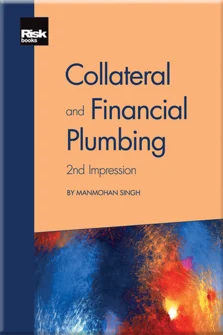The Economics of Shadow Banking
The Economics of Shadow Banking
Collateral in Financial Plumbing
Collateral Velocity
The Economics of Shadow Banking
Collateral and Monetary Policy
Money, Collateral and Safe Assets
Collateral and the OTC Derivatives Market
The Changing Collateral Space
The Collateral Infrastructures
The Sovereign–Bank Nexus via OTC Derivatives
When Financial Plumbing Breaks Down: An Example from Central Counterparties
Transmission of Monetary Policy Feds Lift-off and Collateral Reuse
Conclusion
 The couple of decades leading up to the Lehman crisis in 2008 witnessed rapid growth in financial intermediation whereby non-banks interact with banks. Coined under the rubric of shadow banking, the banknon-bank nexus is largely seen as a form of regulatory arbitrage. However, this is an incomplete view, since there is genuine economic demand for such services. This chapter11Written for the Reserve Bank of Australias Funding and Liquidity Conference, Sydney (August 2013).attempts to explain the economics that supports the demand/supply for this market, the systemic risks that can arise and the regulatory and broader policy implications.
The couple of decades leading up to the Lehman crisis in 2008 witnessed rapid growth in financial intermediation whereby non-banks interact with banks. Coined under the rubric of shadow banking, the banknon-bank nexus is largely seen as a form of regulatory arbitrage. However, this is an incomplete view, since there is genuine economic demand for such services. This chapter11Written for the Reserve Bank of Australias Funding and Liquidity Conference, Sydney (August 2013).attempts to explain the economics that supports the demand/supply for this market, the systemic risks that can arise and the regulatory and broader policy implications.
To formulate a policy response to shadow banking, we need to understand the nuts and bolts of how these markets work. Collateral is used in a wide range of financial transactions: secured funding (mostly by non-bank investors), repurchase agreements (or repo), and hedging (primarily with over-the-counter (OTC) derivatives). As collateral is increasingly scarce, a key shadow-banking function is to mobilise and reuse collateral to support a large volume of transactions. So there is use of capital in shadow banking in the form of margins and
Copyright Infopro Digital Limited. All rights reserved.
As outlined in our terms and conditions, https://www.infopro-digital.com/terms-and-conditions/subscriptions/ (point 2.4), printing is limited to a single copy.
If you would like to purchase additional rights please email info@risk.net
Copyright Infopro Digital Limited. All rights reserved.
You may share this content using our article tools. As outlined in our terms and conditions, https://www.infopro-digital.com/terms-and-conditions/subscriptions/ (clause 2.4), an Authorised User may only make one copy of the materials for their own personal use. You must also comply with the restrictions in clause 2.5.
If you would like to purchase additional rights please email info@risk.net











